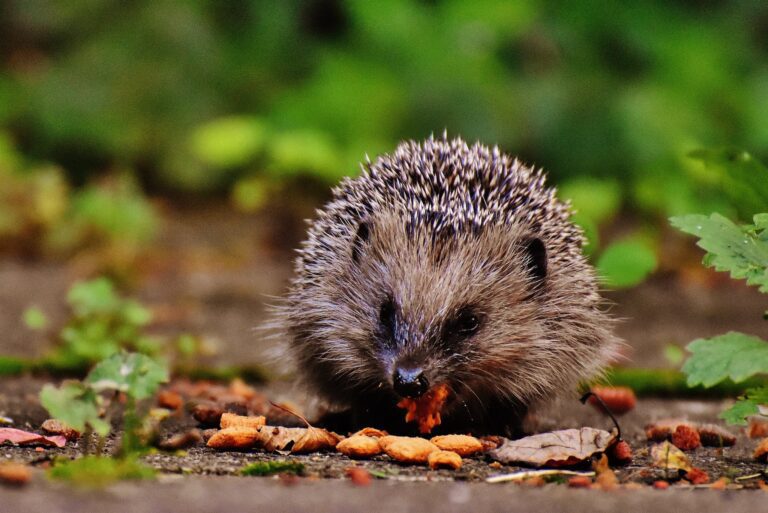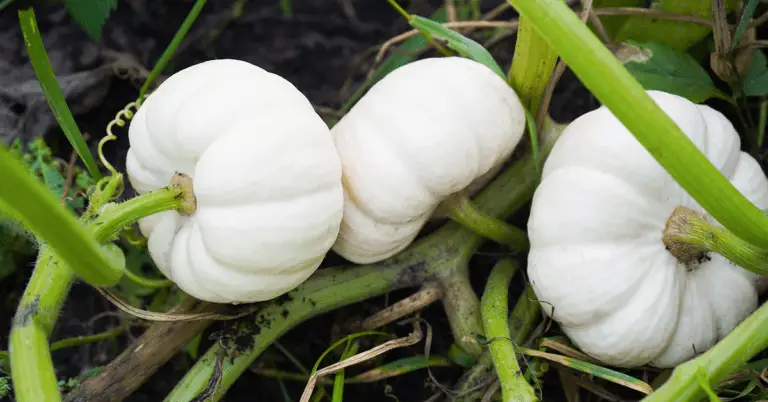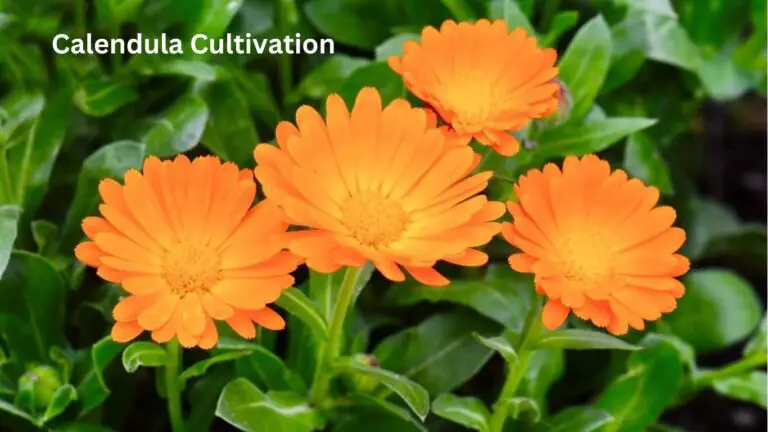Blooming Flowers All Season Long: A Guide to 31 Varieties
Table of Contents
Understanding the Importance of Choosing the Right Varieties of blooming flowers
Choosing the right varieties of blooming flowers for your garden is a crucial step towards achieving a vibrant and flourishing landscape. The selection process involves considering various factors, such as climate, soil conditions, and personal preferences. By making informed choices, you can ensure that your garden is filled with blooms that not only thrive but also complement each other.
One of the main reasons why choosing the right flower varieties is important is because it affects the overall aesthetic appeal of your garden. By selecting flowers that have different colors, sizes, and textures, you can create a visually stunning display that is pleasing to the eye. Whether you prefer a symmetrical arrangement or a more whimsical mix, the right flower varieties can help you achieve your desired look. Moreover, by carefully selecting plants that bloom in different seasons, you can enjoy a continuous progression of colors and blossoms throughout the year.
In addition to aesthetics, choosing the right varieties is also important for the long-term health and sustainability of your garden. Different flowers have different requirements in terms of sunlight, water, and soil conditions. By selecting varieties that are well-suited to your climate and soil type, you can ensure that your flowers will thrive and have a better chance of withstanding various environmental factors. This not only reduces the risk of plant failure but also minimizes the need for excessive maintenance and interventions. Ultimately, choosing the right flower varieties can contribute to a more resilient and sustainable garden ecosystem.

Exploring the Benefits of Having Blooming Flowers All Season Long
Having blooming flowers all season long in your garden offers numerous benefits that go beyond their aesthetic appeal. Not only do these vibrant blooms create a visually stunning landscape, but they also contribute to the overall health and biodiversity of your garden.
One of the key advantages of having continuous blooms is the attraction of pollinators. Bees, butterflies, hummingbirds, and other beneficial insects are drawn to flowers for their nectar and pollen, aiding in the pollination process. This, in turn, promotes the reproduction of other plants in your garden, contributing to a thriving ecosystem. Additionally, a diverse range of blooming flowers can attract a variety of pollinators, further enhancing the biodiversity of your outdoor space.
Furthermore, blooming flowers throughout the season provide a constant source of food and shelter for wildlife. Birds, in particular, rely on the seeds and insects found in flowers to sustain themselves and their young. By cultivating a garden with a wide array of flowering plants, you can create a habitat that supports a diverse range of bird species, enriching the natural environment around your home.
In addition to the ecological benefits, having blooming flowers all season long can also have a positive impact on your mental well-being. Numerous studies have shown that being surrounded by nature and engaging with plants can reduce stress, improve mood, and enhance overall happiness. The vibrant colors, delightful fragrances, and soothing presence of blooming flowers create a serene and calming atmosphere that promotes relaxation and rejuvenation.
In conclusion, the benefits of having blooming flowers all season long extend beyond their visual appeal. They attract pollinators, contribute to biodiversity, provide a food source for wildlife, and enhance mental well-being. As you embark on creating a garden filled with continuous blooms, remember to choose a variety of flowers that will thrive in your climate and pay attention to their specific care requirements. This will ensure that you can enjoy the myriad benefits of these blossoming beauties throughout the year.

Factors to Consider When Selecting Flower Varieties for Continuous Blooms
When selecting flower varieties for continuous blooms, there are several factors to consider to ensure a successful and vibrant garden display. One important factor to keep in mind is the climate and growing conditions in your area. Different flowers have specific requirements for sunlight, temperature, and moisture. By choosing varieties that are well-suited to your particular climate, you increase the chances of achieving continuous blooms throughout the growing season.
Another factor to consider is the desired blooming period of the flowers. Some varieties have a short blooming season, while others can bloom for several months. By selecting a combination of early, mid, and late blooming flowers, you can ensure a more extended and continuous display of color in your garden. Additionally, consider the growth habit and size of the chosen varieties. This will help you plan the layout of your garden and ensure that the plants have enough space to thrive and bloom to their full potential.
It is also essential to consider the maintenance requirements of the flower varieties. Some flowers may require more extensive care, such as deadheading or regular pruning, to promote continuous blooming. Others may be more low-maintenance and require minimal intervention. Considering the amount of time and effort you are willing to invest in your garden will help you choose flower varieties that align with your gardening capabilities.
By taking into account the climate and growing conditions, desired blooming period, and maintenance needs of different flower varieties, you can select the most suitable options for continuous blooms in your garden. A well-selected combination of varieties will ensure a consistent and vibrant display of color throughout the growing season, providing you with a visually appealing and rewarding gardening experience.
Creating a Well-Planned Garden Layout for Year-Round Blooms
A well-planned garden layout is essential for achieving year-round blooms. By carefully considering the design and arrangement of your flower beds, you can create a visually stunning display that will delight the senses throughout the seasons. One important aspect to consider is the height and structure of the plants. By incorporating a mix of tall, medium, and low-growing flowers, you can create depth and visual interest in your garden. Additionally, grouping flowers with similar blooming periods together can ensure a continuous display of color and fragrance.
Another key consideration when planning your garden layout is the spacing between plants. Giving each flower enough room to grow and spread its roots is crucial for optimal health and blooming performance. Overcrowding can lead to competition for nutrients and sunlight, resulting in stunted growth and fewer blooms. Take the time to research the specific spacing requirements for each variety you plan to include in your garden, and arrange them accordingly. A well-spaced garden will not only promote healthy growth but also make maintenance tasks, such as watering and weeding, more manageable.

The Role of Soil Preparation in Maximizing Blooming Potential
Soil preparation plays a crucial role in maximizing the blooming potential of flowers in your garden. The quality and condition of the soil directly impact the overall health and growth of plants, and ultimately, their ability to produce abundant blooms.
One important aspect of soil preparation is ensuring that it is well-drained. Poor drainage can lead to waterlogged soil, which can suffocate the roots and cause root rot. This can have detrimental effects on the plants’ ability to take in nutrients and water, ultimately stunting their growth and reducing their blooming potential. To improve drainage, you can add organic matter such as compost or well-rotted manure to the soil. These amendments not only help break up heavy soils, allowing for better water movement, but also enhance the soil’s ability to retain moisture for plants to access during dry periods.
Essential Steps for Planting and Caring for Blooming Flowers
Planting and caring for blooming flowers requires careful consideration and attention to detail. To ensure successful growth and vibrant blooms, there are several essential steps that every gardener should follow.
First, it is important to select the right flower varieties for your specific climate and growing conditions. Take into account factors such as sunlight requirements, soil type, and water availability. Choosing varieties that are well-suited to your environment will greatly increase the chances of achieving continuous blooms.
Once you have selected your flower varieties, proper planting techniques are crucial. Prepare the soil by removing weeds and incorporating organic matter to improve its fertility and drainage. Plant the flowers at the appropriate depth, following the instructions provided on the seed packet or plant label. Providing adequate spacing between plants will allow for proper air circulation, reducing the risk of common diseases.
After planting, diligent care is essential for the ongoing health and vitality of your blooming flowers. Regular watering is crucial, ensuring that the soil is consistently moist but not waterlogged. Mulching can help retain moisture and suppress weeds, keeping the plants in optimal condition.
Additionally, fertilizing your blooming flowers is important for promoting growth and enhancing blooming performance. Choose a balanced fertilizer with a ratio of nitrogen, phosphorus, and potassium that is suitable for your particular flower varieties. Applying the fertilizer at the recommended intervals and rates will keep your plants well-nourished throughout the growing season.
While proper care is vital, it is also important to be vigilant against common pests and diseases that can hinder blooming. Regularly inspect your plants for signs of infestation or damage, and take appropriate measures to address any issues. This may include using organic pest control methods or seeking the advice of a gardening professional.
By following these essential steps for planting and caring for blooming flowers, you can create a vibrant and thriving garden that provides continuous blooms. With proper selection, planting techniques, careful maintenance, and pest management, you will be rewarded with an exquisite display of color and fragrance throughout the seasons.
Here’s a table outlining essential steps for planting and caring for blooming flowers:
| Step | Description |
|---|---|
| Choose the Right Location | Select a planting site that receives appropriate sunlight for the specific flower species—full sun, partial shade, or shade. Consider soil drainage and exposure to wind and elements. |
| Prepare the Soil | Ensure the soil is well-draining, fertile, and free of weeds. Incorporate organic matter such as compost or aged manure to improve soil structure and provide essential nutrients. |
| Select and Plant Flowering Plants | Choose healthy, disease-free flowering plants suited to your climate and growing conditions. Dig holes slightly larger than the root balls, plant at the appropriate depth, and water thoroughly. |
| Water Regularly | Provide consistent moisture to newly planted flowers to help establish roots. Water deeply and evenly, avoiding waterlogging or allowing the soil to dry out completely between watering. |
| Mulch Around Plants | Apply a layer of organic mulch, such as wood chips or straw, around flower beds to retain soil moisture, suppress weeds, and regulate soil temperature. Leave space around plant stems. |
| Fertilize as Needed | Feed flowering plants with a balanced fertilizer formulated for blooming plants to promote healthy growth and abundant flowers. Follow package instructions for proper application rates. |
| Deadhead Spent Flowers | Regularly remove faded or spent flowers to encourage continuous blooming and prevent seed formation. Pinch or cut flower stems just above a set of healthy leaves or buds. |
| Monitor for Pests and Diseases | Keep an eye out for signs of pest infestations or disease symptoms, such as yellowing leaves or distorted growth. Take prompt action to control pests and treat diseases as needed. |
| Provide Support if Necessary | Stake tall or floppy flowering plants to provide support and prevent them from bending or breaking in strong winds or heavy rains. Use garden stakes or plant supports as appropriate. |
By following these essential steps, you can ensure successful planting and care for blooming flowers, resulting in a vibrant and beautiful garden display.
Nurturing Blooming Flowers Through Proper Watering Techniques
Proper watering techniques are essential for nurturing blooming flowers and ensuring their healthy growth and continuous blossoming. Water is a crucial element that plants require to carry out vital physiological processes, including photosynthesis and nutrient uptake. Thus, understanding how to provide the right amount of water at the right time is crucial for maintaining the blooming potential of your flowers.
To begin with, it is important to note that the water requirements of flowers vary depending on factors such as the plant species, the climate in which they are grown, and the soil type. Overwatering can lead to root rot and other detrimental effects, while underwatering can cause wilting and stunted growth. To determine the appropriate watering schedule, it is recommended to observe the soil moisture level and water your flowers when the top inch or two of soil feels dry to the touch.
In addition to timing, the method of watering also plays a vital role in nurturing blooming flowers. The primary aim is to ensure that water reaches the root zone where it is needed the most. The use of watering cans, hoses with diffusers, or drip irrigation systems can be effective in achieving this goal. Avoid directly spraying water on the flowers, as wet petals can increase the risk of fungal diseases. Instead, direct the water flow towards the base of the plants, allowing it to penetrate the soil and reach the roots.
By following proper watering techniques tailored to the specific needs of your blooming flowers, you can create an environment that promotes healthy growth and continuous blossoming. However, it is important to remember that each plant has its unique requirements, so it is always advisable to consult specific guidelines for the particular flower varieties you are cultivating. Providing adequate water is just one piece of the puzzle in maintaining year-round blooms, and in the next sections, we will explore further factors that contribute to the sustained production of blossoms.
Providing Adequate Sunlight for Continuous Blooming Success
Sunlight plays a crucial role in the continuous blooming success of flowering plants. Adequate exposure to sunlight ensures that plants receive the necessary energy for photosynthesis, which drives their growth and development. Most flowering plants, including popular varieties such as roses, daisies, and petunias, require at least six to eight hours of direct sunlight daily to thrive.
When it comes to providing adequate sunlight for continuous blooming success, it is essential to consider the location of your garden or flower bed. Ensure that it receives ample sunlight throughout the day, especially during the morning and early afternoon when the sun’s rays are at their strongest. Observe the path of the sun in your garden to identify any areas that may be shaded by nearby structures or trees.
Trim overhanging branches or strategically position your plants to receive maximum sunlight exposure. Moreover, if you live in an area with limited sunlight, consider using a reflective surface, such as a white wall or a mirror, to redirect sunlight towards your garden. By prioritizing adequate sunlight, you can create an optimal environment for your flowers to bloom continuously and thrive throughout the growing season.

The Importance of Pruning and Deadheading for Sustained Flower Production
Pruning and deadheading play a crucial role in sustaining flower production and ensuring the overall health and beauty of your garden. By understanding the importance of these practices and incorporating them into your gardening routine, you can encourage continuous blooming and enjoy a visually stunning landscape throughout the seasons.
Pruning involves selectively removing certain parts of the plant, such as stems, branches, or leaves, to shape the plant, improve airflow, and maintain its overall health. Regular pruning helps promote the growth of new shoots and stimulates flower production. It also allows you to shape your plants for a more aesthetically pleasing garden layout.
Deadheading, on the other hand, involves removing spent or faded flowers from the plant. This practice not only keeps your garden looking neat and tidy, but it also encourages the plant to continue blooming. By removing the spent flowers, you prevent the plant from putting energy into seed production and instead redirect its resources towards producing new blooms. Deadheading also helps prevent the spread of diseases and pests, as decaying flowers can attract unwanted visitors to your garden.
Overall, both pruning and deadheading are essential techniques for sustaining flower production in your garden. By regularly incorporating these practices into your gardening routine, you can promote healthy growth, encourage continuous blooming, and enjoy an abundance of beautiful flowers throughout the year.
Protecting Blooming Flowers from Common Pests and Diseases
Protecting blooming flowers from common pests and diseases is essential for ensuring their health and longevity. These threats can significantly impact the beauty and vibrancy of your garden, so it is crucial to take preventive measures.
One effective strategy is to regularly inspect your plants for any signs of damage or infestation. Look for chewed leaves, wilting flowers, or unusual discoloration, as these could indicate the presence of pests or diseases. Early detection allows for prompt action, minimizing the risk of further damage.
In addition to regular inspections, implementing natural pest control methods can help safeguard your blooming flowers. Use organic pesticides or insecticidal soaps to target specific pests without harming beneficial insects. Introducing beneficial insects like ladybugs or lacewings can also help combat common garden pests. Diseases can be prevented by practicing good sanitation habits such as removing diseased or dead plant material, ensuring proper spacing between plants, and providing adequate air circulation.
By being proactive and employing these protective measures, you can create an environment that fosters healthy growth and stunning blooms. However, it is important to research the specific pests and diseases that commonly affect the flower varieties in your garden. Understanding their life cycles, preferred habitats, and the most effective control methods will enable you to make informed decisions and keep these threats at bay. Remember that prevention is key in maintaining thriving and flourishing blooming flowers.

Implementing Fertilization Strategies to Enhance Blooming Performance
To enhance the blooming performance of your flowers, implementing effective fertilization strategies is essential. By providing your plants with the right nutrients in the right amounts, you can ensure vigorous growth and abundant blooms. When it comes to fertilization, there are several key considerations to keep in mind.
Firstly, it’s important to choose the right type of fertilizer for your specific flower varieties. Different plants have different nutritional requirements, so selecting a fertilizer formulated specifically for flowering plants will provide them with the necessary nutrients for optimal growth and blooming. Look for a balanced fertilizer that contains a good ratio of nitrogen, phosphorus, and potassium, as these three essential nutrients play crucial roles in flower development.
Secondly, timing is key when it comes to fertilization. It’s best to apply fertilizer during the active growing season, typically in spring and early summer. This allows the plants to utilize the nutrients to their fullest potential. Avoid fertilizing too late in the season, as this may encourage lush foliage growth at the expense of blooms.
Remember to foliar feed your plants as well. Foliar fertilization involves spraying a diluted fertilizer solution directly onto the foliage, allowing for faster nutrient absorption. This method is particularly beneficial for plants with nutrient deficiencies or those in need of a quick nutrient boost. However, make sure to follow the instructions on the fertilizer label and avoid spraying during hot, sunny periods to prevent leaf burn.
By implementing these fertilization strategies, you can maximize the blooming potential of your flowers. Providing the right nutrients at the right time will support healthy growth, vibrant blossoms, and a more rewarding gardening experience overall. As you embark on your fertilization journey, keep in mind the specific nutritional needs of your plants and adapt your approach accordingly for optimal results.
Understanding the Different Blooming Seasons of Various Flower Varieties
Understanding the different blooming seasons of various flower varieties is crucial for any gardener seeking a garden that is in continuous bloom throughout the year. By selecting the right combination of flowers that bloom at different times, enthusiasts can enjoy a vibrant and ever-changing landscape.
Different flower varieties have distinct blooming seasons, which can be categorized into three main groups: spring, summer, and fall. In the spring, we see the emergence of delicate blossoms such as tulips, daffodils, and cherry blossoms. These early bloomers add a burst of color after the long winter months.
As spring transitions to summer, a whole new array of flower varieties come into play. This is when gardens become a riot of color, with perennials like roses, dahlias, and geraniums taking center stage. Their vibrant blooms not only add beauty but also attract pollinators such as bees and butterflies, ensuring a thriving ecosystem within the garden.
When summer gives way to fall, another set of flower varieties take over the stage. Chrysanthemums, marigolds, and asters are just a few examples of the hearty blooms that grace gardens during this season. These flowers add warmth to the landscape and serve as a colorful farewell before the arrival of winter.
By understanding the different blooming seasons of various flower varieties, gardeners can strategically plan their garden layouts and choose complementary plants that will ensure continuous blooming all year round. A well-curated selection of flowers will create a visual feast for the senses and bring year-round joy to any gardening enthusiast. Stay tuned as we explore the factors to consider when selecting flower varieties for continuous blooms in our next article.
Planning for Succession Planting to Maintain Year-Round Blooms
Succession planting is a strategic technique that can ensure a continuous display of blooming flowers throughout the year. By carefully planning and implementing this method, gardeners can maximize their garden’s potential and enjoy a vibrant and colorful space no matter the season.
To maintain year-round blooms, it is essential to select flower varieties with different blooming periods. By choosing plants that flower at different times, you can create a seamless transition of blooms from one season to the next. For example, consider planting early-spring bulbs like tulips and daffodils alongside summer-flowering perennials such as coneflowers and daylilies. This thoughtful combination will ensure a steady stream of flowers from spring through summer, providing constant visual interest in your garden.

Exploring Companion Planting Options for Extended Blooming Periods
Companion planting is an effective method that gardening enthusiasts can utilize to extend the blooming period of their flowers. By strategically pairing different types of plants, gardeners can create harmonious relationships where one plant benefits the other, leading to a longer and more abundant display of blooms.
One popular example of companion planting for extended blooming periods is the pairing of roses with lavender. Lavender, with its strong fragrance, acts as a natural deterrent for pests that often plague roses. In return, roses provide a taller and sturdier structure for lavender to grow and climb on. This symbiotic relationship not only ensures a continuous blooming period for both plants, but it also adds a delightful mix of colors and scents to the garden.
Another successful combination for prolonged blooming is the partnership between marigolds and tomatoes. Marigolds emit a strong scent that repels insects, protecting the neighboring tomato plants from harmful pests. Additionally, marigolds attract pollinators such as bees and butterflies, increasing the chances for successful pollination of the tomato flowers. As a result, both the marigolds and tomatoes thrive, offering a vibrant and fruitful display in the garden.
By exploring these and other companion planting options, gardeners can enhance their chances of enjoying extended blooming periods. The key is to understand the needs and preferences of different plants and to create beneficial relationships that promote healthy growth and continuous flowering. So, next time you plan your garden layout, consider the power of companion planting as a natural and effective method to extend the beauty and vibrancy of your flowers.
Creating a Beautiful Flower Display with a Variety of Colors and Textures
When it comes to creating a beautiful flower display with a variety of colors and textures, there are several key factors to consider. First and foremost, it’s important to carefully select a diverse range of flower varieties that will complement each other in terms of color, shape, and size. By choosing flowers that bloom at different times throughout the year, you can ensure a continuous display of vibrant colors and textures in your garden.
In addition to selecting the right flower varieties, it’s also crucial to consider their placement within your garden. Creating a well-planned layout that takes into account factors such as sunlight exposure, soil conditions, and height variations can greatly enhance the visual appeal of your flower display. By strategically placing taller flowers at the back and shorter ones at the front, you can create depth and visual interest. Furthermore, grouping flowers with similar colors or textures together can create a cohesive and harmonious display that is pleasing to the eye.
Troubleshooting Common Issues That May Affect Blooming Flowers
Troubleshooting Common Issues That May Affect Blooming Flowers
When it comes to maintaining a garden full of blooming flowers, there are a few common issues that can hamper their growth and hinder the desired continuous blooming effect. One of the most significant issues is improper watering techniques. Overwatering can drown the roots and lead to root rot, while underwatering can cause the flowers to wilt and die prematurely. It is crucial to find the right balance and water the plants consistently, keeping in mind their specific moisture requirements.
Additionally, pests and diseases can wreak havoc on your blooming flowers. Common pests like aphids, mealybugs, and spider mites can damage the leaves and buds, ultimately hindering the blooming process. Diseases like powdery mildew and leaf spot can also affect the overall health and appearance of the plants. To combat these issues, regular monitoring is necessary, and appropriate measures such as organic insecticides or fungicides may be required. Proper sanitation practices, such as removing infected leaves and stems, can also help prevent the spread of diseases.
By addressing these common issues and implementing effective troubleshooting techniques, you can ensure that your blooming flowers thrive and provide an enchanting display throughout the year. In the following sections of this article, we will delve into the details of each issue and discuss practical solutions to overcome them.
Why are my blooming flowers not producing any flowers?
There are several possible reasons for this. It could be due to inadequate sunlight, improper soil preparation, or incorrect watering techniques. Assess these factors and make necessary adjustments to encourage blooming.
How often should I water my blooming flowers?
The frequency of watering depends on various factors such as the type of flower, weather conditions, and soil moisture levels. It is generally recommended to water deeply and infrequently, ensuring the soil is evenly moist but not waterlogged.
What are some common pests that may affect blooming flowers?
Common pests that may affect blooming flowers include aphids, snails, slugs, and spider mites. Implement pest control measures like using insecticidal soaps or natural predators to prevent damage to your flowers.
How can I protect my blooming flowers from diseases?
To protect blooming flowers from diseases, maintain good hygiene practices such as removing dead or infected plant material, avoiding overcrowding, and providing proper air circulation. Additionally, consider using disease-resistant varieties and applying appropriate fungicides if necessary.
Can I use any type of fertilizer for blooming flowers?
It is important to use a fertilizer specifically formulated for blooming flowers. Look for a balanced fertilizer with a higher phosphorus content, as phosphorus promotes flower production. Follow the manufacturer’s instructions for application rates and timing.
Are there certain flowers that bloom in specific seasons?
Yes, different flower varieties have specific blooming seasons. Some may bloom in spring, while others bloom in summer, fall, or even winter. Research the specific blooming seasons of the flowers you are interested in to plan your garden accordingly.
What is succession planting for maintaining year-round blooms?
Succession planting involves planting different flower varieties with staggered blooming periods. By doing this, you can ensure a continuous display of blooms throughout the year, as one variety finishes flowering, another starts.
How can companion planting extend the blooming period?
Companion planting involves growing compatible plant species together. By selecting companion plants that bloom at different times, you can extend the blooming period in your garden and create a more visually appealing display.
How do I create a beautiful flower display with a variety of colors and textures?
To create a visually stunning flower display, choose flowers with different colors, heights, and textures. Consider complementary or contrasting color combinations and arrange them strategically in your garden to create a visually pleasing effect.
What are some common issues that may affect blooming flowers?
Some common issues that may affect blooming flowers include nutrient deficiencies, improper pruning, overwatering, under or overexposure to sunlight, and pest infestations. Regularly monitoring your plants and addressing any issues promptly can help maintain healthy and blooming flowers.

Beck Wakeford is a dedicated writer at SouthElMonteHydroponics, with a fervent enthusiasm for agriculture and technological innovation. Armed with a degree in Agricultural Engineering from a leading university, Beck specializes in hydroponic systems design, automation, and optimization. Their passion for merging traditional farming with cutting-edge technology drives them to explore novel solutions for sustainable food production. Beck’s expertise and keen interest in the intersection of engineering and agriculture make them a valuable asset in the quest for efficient and eco-friendly farming practices. Through their writing, Beck aims to inspire others to embrace the potential of hydroponics in shaping a more sustainable future.






